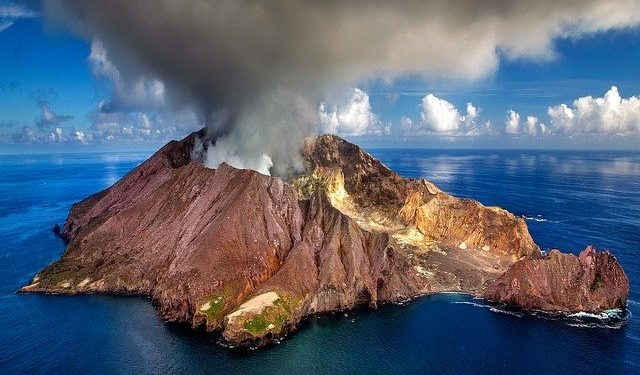The White Island Volcano is located in the West rift zone on the rugged coastline of New Zealand. This active stratovolcanic field erupts every year, causing large volumes of lava and ashes to pour down the slopes. This eruption is not the latest and was the first of its kind to be noticed. In fact, it took scientists decades to pinpoint what kind of eruptions this particular volcano had been responsible for.
It is thought that the eruptions have been caused by any number of different volcano-tainted materials, including sulfur, iron, and other minerals, and even bacteria. The volcano has since quieted down for the most part, but there are still reports of lava flows and ash explosions from the slopes. However, there has been no significant impact on wildlife or the environment as a result of the volcano’s activity, and it has not prompted any evacuation or warning signs to be posted. The last significant eruption took place more than 200 years ago.
It can be seen from satellites and from the air as a small island, which is located about halfway between two large mountains on the northwest side and the city of Queenstown. There are also other smaller islands in the area, all of which are still volcanic. They are often in the volcanic ash plume itself, which helps to explain why there are no signs of ash, smoke, or lava in the air. This means that despite the eruption, the volcano has not impacted much on nearby vegetation, nor has it caused damage to anything else on land.
Since the eruption, weather conditions have remained dry and cloudy, allowing temperatures to remain moderate, though slightly above normal. Winds have also been light and breezy, with cooler air massaging the volcano as it gently blows across its surroundings. No weather models or forecasts are available for the next week or so, as more accurate analyses of the weather conditions that prevail at the time remain unclear. However, conditions are improving and forecasters have issued several weather conditions statements that should provide a bit of comfort to visitors to White Island volcano.
The most significant weather event that may affect the erupting volcano has not actually taken place yet. However, scientists believe that conditions are conducive for a small eruption. Some scientists predict that this may take place on the afternoon of Saturday, the day before the forecasted hurricane. The volcano will then experience a period of quiet and increased activity, which is also associated with rain. This is a good time to visit the volcano and capture some photos or even video footage if you happen to be there when it erupts.
Since the island is located in a sheltered bay, a low-pressure system is expected. This is also associated with an increase in the amount of rainfall, which will probably end up being considerably more than normal. Since the winds blow from the southwest, stormy weather is also possible, with the wind blowing directly over the volcano. It is important to note that the National Weather Service has issued a weather warning that will be effective until 10 am CDT on Saturday.
The weather condition that has been mentioned above is likely to produce gusty and strong winds, along with light rain. It is likely that this will lead to flooding and erosion, especially near the volcano. If you do decide to go there during this time, it is a good idea to wear a life jacket and take rainwear. Even though you won’t be underneath the waterfall itself, it is still highly dangerous. Be sure that you have all of your safety gear on hand! You can never know when the volcano will erupt, so if you have no desire to see it erupt, then don’t go.
It is hard to say whether or not the White Island Volcano will erupt this season or not. Only the weather will tell, but rest assured that this is a possibility. It is also a good idea to monitor the volcano regularly so that you can be prepared if it does erupt.






























